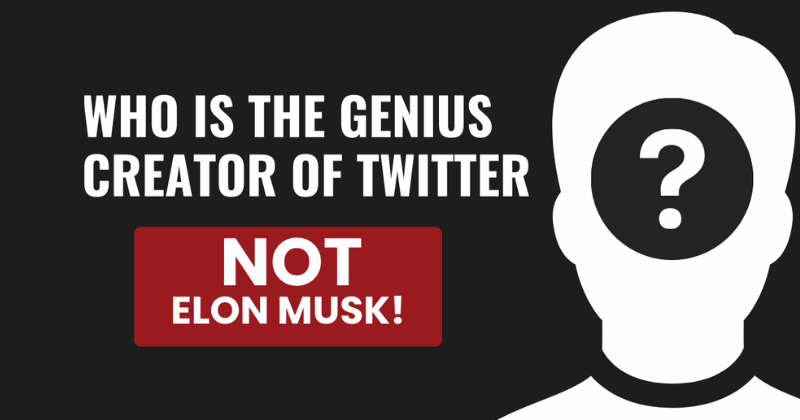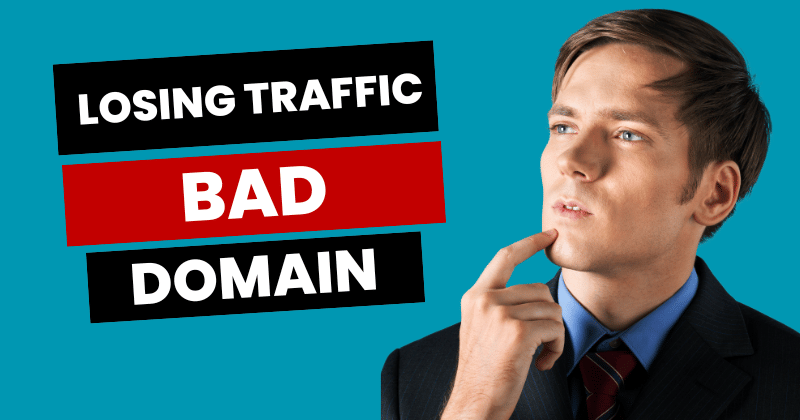When the Domain Name You Chose No Longer Works
Most startups and business owners make the best decision they can when registering a domain—often based on what’s available or affordable at the time.
But what happens when that “good enough” domain becomes a liability?
Maybe your domain is too long, hard to remember, or tied to an outdated brand. Or maybe you went with a trendy extension like .io or .co—only to realize later you’re losing traffic to the .com version owned by someone else.
This domain insight explores how changing domain name impacts SEO, branding, and user trust—and how to fix domain mistakes without wrecking your online presence.
Why Some Domains Start Strong—but Fail to Scale
Entrepreneurs often launch with domain names like BrandName.co (because .com was taken), GetBrandName.com (a temporary workaround), BrandApp.io (popular in tech).
At the time, these felt like clever, cost-saving decisions.
But as your business grows, you may start noticing that: Customers mistyping or forgetting your URL, Emails bouncing due to confusion with .com addresses, Brand credibility issues, especially with investors or enterprise clients, Ranking challenges in Google despite strong SEO efforts.
That’s when the question hits:
“Should I change my domain name? And what’s the SEO impact if I do?”
Signs You Picked the Wrong Domain Name
Not all domain decisions age well. What seemed clever, trendy, or cost-effective at launch may now feel like a barrier between your brand and the trust it deserves.
If any of these signs sound familiar, it may be time to fix your domain name—before it starts costing you even more in lost traffic, credibility, or opportunity.
Your Domain Extension Raises Eyebrows and causes trust issues
If your website ends in .biz, .co, .net, or .info, you’ve probably noticed hesitation from customers, investors, or partners.
These extensions are often perceived as second-tier, unfamiliar, or even spammy—especially when your competitors use clean .coms.
“I wanted to reach out… but I wasn’t sure if the site was legit.”
That’s the moment you lose the deal—and it happens more often than you think.
You’re Losing Traffic to the .COM
You tell someone your domain is “MyBrand.co” or “MyBusiness.io”—but they instinctively type “.com” and land somewhere else.
If the .com is taken (or worse, being used by another business), you’re bleeding visibility and credibility every day.
You may not see it in your analytics, but it’s happening in real-time—every time someone gets confused, mistypes your link, or questions if your site is official.
Your Domain Is Too Long, Generic, or Easy to Miss
If people hesitate when spelling your name or you constantly have to explain it (“It’s brand-name-online-dot-net”), that’s a sign your domain is working against you.
A confusing or forgettable domain leads to:
- Fewer word-of-mouth referrals
- Broken links in PR or email
- Missed direct traffic opportunities
“We kept losing leads from podcasts and webinars because people couldn’t remember the full domain.”
It Doesn’t Match Your Current Brand or Audience
Maybe your brand evolved—but your domain didn’t. You pivoted from B2C to B2B, or entered a new market, but the domain still speaks to your early days.
A mismatch like this creates subtle dissonance that erodes trust and makes you look less professional—no matter how great your product is.
You’re Growing Fast, But Your Domain Isn’t Keeping Up
You’re scaling. You’ve raised funding. You’re pitching bigger clients. But your domain name feels like a leftover from your side-project days.
At some point, your domain must grow up with your business.
It’s no longer “just a URL”—it’s your brand’s first impression.
Can’t Get the .COM? Here’s What You Can Do
You might not be able to get your dream domain right away—but that doesn’t mean you’re stuck.
Options to improve domain credibility and branding:
- Use a brandable variation (e.g. BrandHQ.com, BrandStudio.com)
- Acquire a premium domain via a broker or marketplace
- Redirect from your current domain to the stronger one after acquisition
- Secure matching social media handles for consistency
- Start a gradual rebrand to align your name and domain long term
Should You Rebrand Just for the Domain?
Sometimes, yes.
Changing domain name is needed if your domain name is:
- Constantly misspelled or misheard
- Mismatched with your product or mission
- Hurting email trust (think .biz, .info, or long weird names)
… then rebranding to a domain that’s clean, clear, and brand-owned can be a game-changing move.
Think of your domain as your digital storefront. If the sign above the door looks shady or off-brand, people will walk right past it.
Real Example of Brand That Changed Domain Name Successfully
Twitter.com: From Tech Quirk (Twttr.com) to Global Brand Powerhouse

In 2006, Twitter launched under the quirky domain Twttr.com, dropping the vowels as part of the era’s startup naming trend. It was short. It was “cool.” But it wasn’t clear.
As the platform gained momentum, the founders realized something critical:
People didn’t instantly get what Twttr meant, and they constantly misspelled or misunderstood the name.
Internally, the brand had outgrown its minimal, experimental beginnings. Externally, the domain created friction—friction in word-of-mouth referrals, in media mentions, in user onboarding. If you’re building a mass-consumer product meant to be talked about, tweeted, and shared… clarity is currency.
So they made the move: Changing domain name from “Twttr.com” to Twitter.com.
They acquired Twitter.com—the full, proper, recognizable name—and aligned their domain with their evolving brand.
That one decision helped catapult Twitter from a niche tech project to a global household name.
If Twitter had stayed on Twttr.com, it might’ve remained a footnote in startup history. The .com domain was more than a name—it was a statement of intent.
The Lesson for Business Owners & Brand Managers
You may not be building the next Twitter—but your domain name still shapes how people perceive, trust, and talk about your brand.
If your current domain is:
- Clever but confusing
- Short but ambiguous
- Off-brand from what your business has become…
…it’s never “too late” to evolve. Your domain name can grow with your brand—and sometimes, it needs to in order for your brand to grow at all.
Changing Domain Name: SEO Impact & Real Risks
Yes—changing domain can impact your SEO. But it’s not an automatic disaster if done strategically.
Here’s what can go wrong if you switch without a plan:
- Loss of backlinks and domain authority
- Drop in Google search result rankings
- Confused users or broken bookmarks
- Email deliverability issues if not redirected properly
But with a proper domain migration strategy, these effects can be minimized or even fully avoided.
How to Switch Domains Without Losing Traffic or SEO
Changing your domain name can feel risky—but with a clear plan, you can protect your visibility and even come out stronger.
Changing domain name doesn’t have to destroy your SEO—here’s how smart brands do it right.
How to migrate your domain the right way:
Choosing the wrong domain is just one of several common—and costly—mistakes businesses make.
Explore all Top 10 Domain Mistakes That Could Hurt Your Brand and how to fix them before they cost you more.
1. Redirect All Pages with 301 Redirects
This is the most critical step. A 301 redirect tells search engines:
“This old page has permanently moved to a new URL—pass the SEO value to the new one.”
Don’t just redirect the homepage.
You must redirect each old page to its new counterpart:
- /about → /about
- /services → /services
- /blog/how-we-work → /blog/how-we-work
This ensures that your SEO rankings, backlinks, and user bookmarks don’t break.
Even one broken link can lead to a customer hitting a 404 page—and walking away.
2. Update Google Search Console
Google needs to know you’ve moved.
- First, verify your new domain inside Google Search Console.
- Then, use the Change of Address Tool to tell Google:
“Hey, we’ve moved everything—please update your index.”
This step helps preserve your rankings and speeds up how quickly the new domain gets crawled and trusted.
Think of it as filing a change-of-address form for your business—online.
3. Update Backlinks Where Possible
Your backlinks (other websites linking to you) are part of your SEO strength. After migrating, they’ll still work if you redirected correctly, but:
If you can update high-authority links directly (such as in news articles, partner sites, or directories), do it. It strengthens the signal to Google and can boost your new domain’s authority faster.
Reach out with a friendly email asking them to update your link to the new domain.
4. Keep the Old Domain Active for 1–2 Years
Never let your old domain expire right after migrating.
Why?
- People will still click on old links or type your previous address
- Search engines may take time to fully pass ranking signals to the new domain
- PR, podcast appearances, or print mentions from the past may still send traffic to the old site
Keep it live and redirecting for at least 12–24 months to fully protect your SEO.
5. Monitor SEO & Traffic Closely After the Switch
After migration, monitor performance like a hawk:
- Check for indexing errors in Google Search Console
- Track changes in keyword rankings
- Look for sudden traffic drops or spikes using Google Analytics
If done right, your traffic should return to normal (or improve) within a few weeks to a few months.
If you skip these steps or handle the move carelessly, you could experience:
- Massive ranking drops
- Loss of backlinks
- Confused users
- Decreased leads or sales
Fixing a Bad Domain Name Is Possible—and Often Smart
Choosing the wrong domain name doesn’t mean you’re stuck with it forever. With the right planning, changing your domain name can:
- Improve brand perception
- Boost trust and conversions
- Fix lost traffic or SEO performance
But don’t wait until your current domain is hurting your growth. The sooner you act, the more value you’ll recover.
Switching your domain name doesn’t have to cost you your hard-earned SEO—but it absolutely will if you wing it.
Plan carefully, migrate methodically, and track your results. Your brand deserves that level of care.
Need Help Upgrading or Fixing Your Domain?
At NamesDigest, we help startups and business owners:
- Evaluate if a domain switch is worth it
- Acquire premium domains ethically
- Navigate domain migrations without losing SEO
- Build domain-first branding strategies that last
Contact us today for domain strategy advice
or…
Read this article “Top 10 Real-Life Domain Name Mistakes That Could Cost Your Business More Than You Think“













